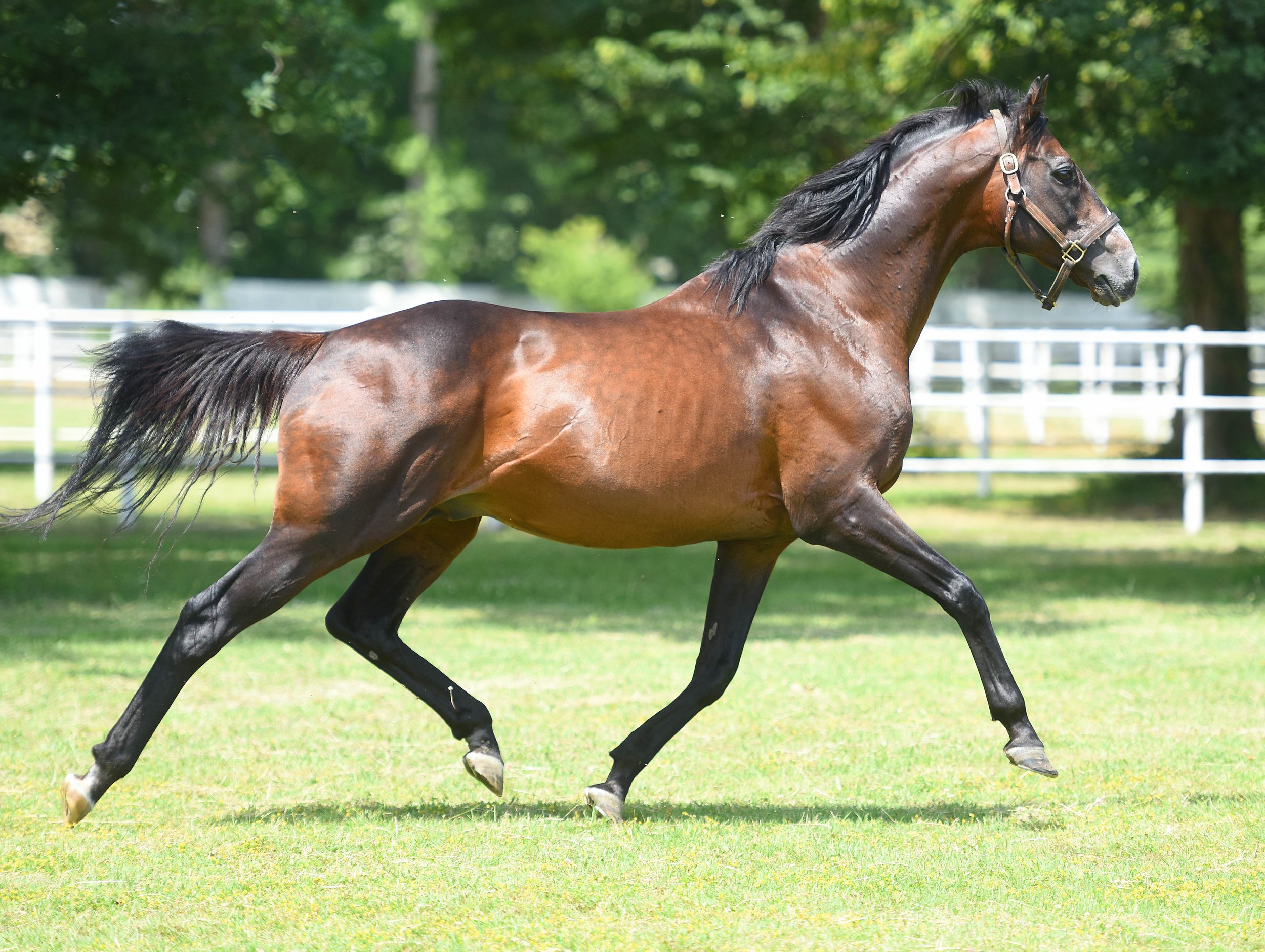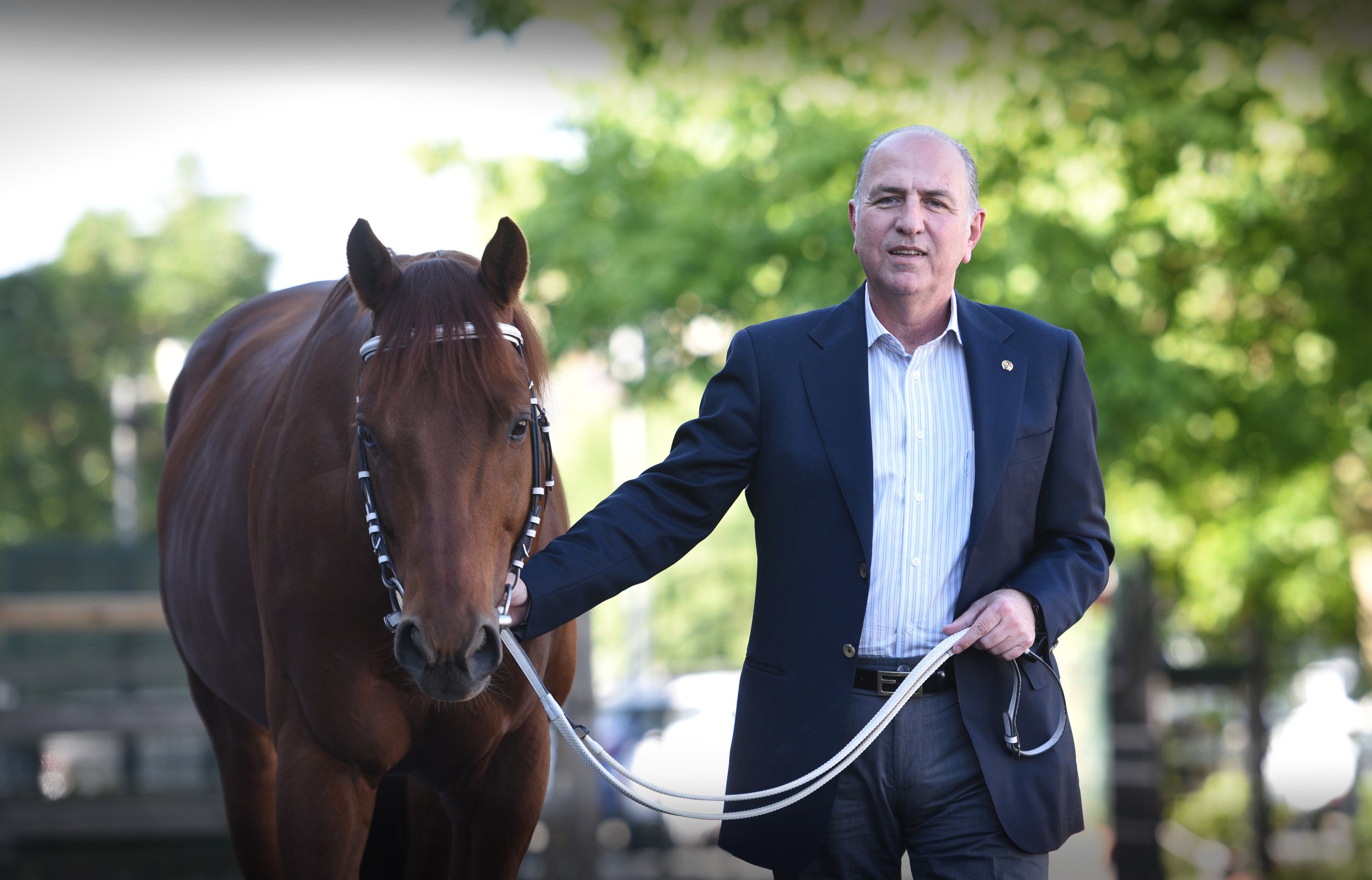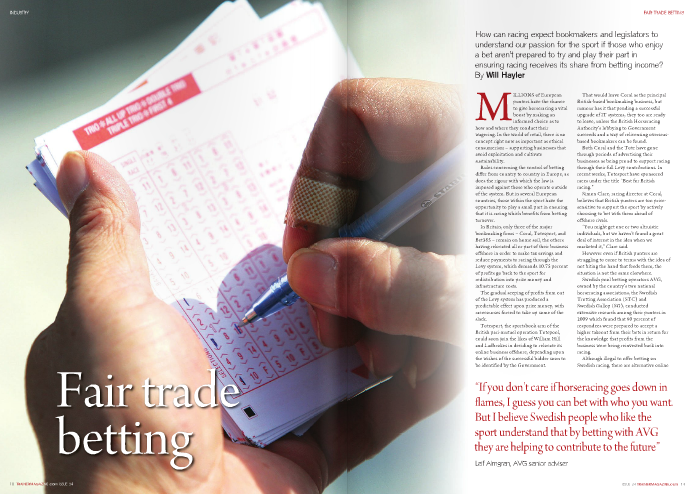Racing and breeding in Turkey
/Article by Paull Khan
The true scale of the thoroughbred industry in Turkey is surely widely underestimated. Turkey is indeed a big hitter in the racing and breeding world, but much of its activity flies under the international radar. This is perhaps not unsurprising, as Turkish racing is almost completely closed. Of the 3,159 thoroughbred races run in the country annually, all but six are closed to foreign-trained runners. All its races may be broadcast across two television channels, but pictures of Turkish racing are rarely seen abroad; and unless one has a Turkish identity number, one cannot place a bet on those races on the Turkish Jockey Club’s platforms. There are only 10 foreign-based owners in the country, and hardly any of its racehorses were bred anywhere other than in Turkey.
But shine a light on this sunniest and most welcoming of countries, and the vibrancy of the industry is remarkable.
Let’s take breeding first. The latest figures available to the International Stud Book Committee (the 2020 foal crop) show that Turkey is one of the few major thoroughbred breeding nations whose foal numbers have actually grown over the past decade. In 2010, Turkey ranked 15th in the world, in terms of number of foals bred, with 1,500. She now ranks as high as 9th in the world, with 2,103 foals – a 40% increase, no less, at a time when global production is in marked decline. Turkey is, in fact, the fastest-growing major breeding nation in the world. Amongst the top ten, only Ireland’s and Japan’s foal crops have increased over this decade, and both have seen much more modest growth than Turkey’s (15% and 11% respectively). And this Turkish expansion continues: some 2,280 foals were registered in 2022 – a further 8% rise.
Look down a racecard in Turkey, and you would be lucky to see a foreign-bred suffix beside any of the runners’ names. With only 24 out of 3,500+ horses having been foaled outside the country, such a racecard would be something of a collector’s piece. The explanation can be found in a regulation that only allows Thoroughbreds to be imported in the year of their birth. A striking example of the closed nature of Turkish racing, this rule is in place to support local breeders. Another disincentive to buying foreign-breds is that imported horses only receive 75% of the normal prize money.
So, it is domestic production that, almost exclusively, fuels Turkey’s racing product. But that does not mean Turkey is closed to the purchase of foreign bloodstock. Far from it. It has embraced a long-term policy of importing stallions and broodmares strategically to build up the quality of its herd over time. Ten of these stallions are currently owned by the Turkish Jockey Club (TJC) and stand at one or another of their various Stud Farms, which also hosts 47 privately owned stallions. In this way, they are able to offer world-class stallions to their mare owners at knock-down prices.
The most expensive stallion, at least of those whose fees are in the public domain, Luxor, stands at under €8,000.
Current Champion Sire, 1998 Belmont Stakes winner Victory Gallop (CAN), heads the roster of TJC-owned stallions. By the time TJC bought him from America in 2008, he was the sire of multiple-stakes winners. His nomination fee: around €3,000.
2007 Derby hero Authorized (IRE) now stands in Turkey.
A more familiar name to many European Trainer readers among the TJC’s team is 2007 Derby hero Authorized (IRE). Having stood at Dalham Hall, Newmarket and Haras de Logis in France, this sire of six individual Gp1 winners, as well as of Grand National winner Tiger Roll, was acquired by the TJC in 2019, where he stands at some €2,500.
Daredevil (USA), dual Gr1 winner for Todd Pletcher, was purchased by the TJC in 2019.
Daredevil (USA), dual Gr1 winner for Todd Pletcher, was purchased by the TJC in 2019 and stood the 2020 season in Turkey, before returning to his native USA to stand at Lane’s End Farm. However, the TJC have retained ownership of the horse.
Ahmet Ozbelge, General Secretary of TJC, explains the rationale behind this arrangement and the Turkish philosophy on stallion purchases. “After we bought Daredevil, his offspring Shedaresthedevil and Swiss Skydiver performed incredibly well; and we subsequently received many offers from various US stud farms to buy or to stand him. We evaluated all offers and decided not to sell him because of his young age but to stand him at Lane’s End. This is a first for the Turkish breeding sector, and we are glad to be in such a collaboration, to the benefit of the global breeding industry.
“In Turkey, we have very strict criteria for breeding stock purchases from abroad, based on performances of the stallion or the mare in question but also of his/her progeny’s performances. On top of that, we work hard to select the best-suited ones for our country’s specific conditions, including racetrack types, race dıstances, conformation and bloodlines. We also try to build up a good variety in our stallion pool in order to meet the various expectations of our breeders.”
Rising foal numbers are but one example of how Turkey is, in many ways, swimming against the tide. While many countries are seeing a slow decline in their racecourse numbers, Turkey is adding to its roll. Antalya is the latest addition, and it would take a brave punter to bet against further tracks opening their doors in the coming years.
Some €70M will be distributed across Turkey’s national race programme, creating a more than respectable average prize money of €8,200 per race, with owner’s and breeder’s Premiums boosting this to €11,300 per race.
The TJC has no fewer than 2,300 people on its payroll and an outlook that places social engagement higher up the list of priorities than do many racing authorities – perhaps in part to win over the hearts and minds of a populace which tends to be disapproving and to conflate racing and betting. For example, the racecourses offer not only pony and horse rides for the general public but also free equine assisted therapy for the handicapped.
Pony Rides for children and the disabled are routinely offered at Turkish racecourses.
How is an industry of this size sustained? In a word – and unsurprisingly – through betting. Horserace betting has long provided a rich seam of income for the TJC via a formula of which most racing governing bodies can only dream and which is likely to have yielded some €190M in 2022.
By international standards, the Turkish punter gets a raw deal, indeed, with only a 50% return on his stakes. The TJC retains an eye-watering 22% of monies staked, with the remaining 28% slice going to the government. Other income streams for the TJC pale into insignificance: any money from sponsorship, for example, is heavily taxed at a rate of 74%.
Enviable though the TJC’s position may be to many Racing Authorities, it rues the fact that sports betting enjoys yet more favourable treatment. “This is a key point, actually,” explains Ozbelge. “There is a seven-point tax gap between the two sectors in favour of sports betting, which allows them to offer higher payouts. As football is so popular and the most beloved sport in Turkey, we have so many common punters to both racing and football. As a result, they can easily be driven away from the lower payout environment to high payouts.” The paucity of the horseracing return is most evident in single bets, and least apparent in exotics such as the Pick 6 - the Turks’ favourite bet.
To support Ozbelge’s point, sports betting dwarfs horserace betting, accounting for no less than 90% – to racing’s 10% – of legal betting activity. To what extent this is due to the payout differential is difficult to tell. There is also the underlying relative popularity of football which he alludes to; and a further factor may be that, while racing offers pool betting, sports betting is fixed odds. (Exchange betting is outlawed in the country due to integrity concerns).
What is clear is that, with payouts so low, the temptation to bet via the illegal websites is high. “We import race meetings from different countries to prevent Turkish citizens from betting on illegal sites on these races,” continues Ahmet Ozbelge. Even so, it is estimated that the scale of illegal betting at least matches that of legitimate betting.
If European punters and bloodstock agents are likely to find the Turkish landscape somewhat alien, so too might trainers and owners, as the structure is, again, very different.
General Secretary Mr. Ahmet Ozbelge .
There are 795 trainers in the country whose licences allow them to train thoroughbreds or purebred Arabians. There are almost as many Arab races as thoroughbred races, and the prize money is similar. Between the codes, there are over 8,000 horses in training.There is no jump racing nor trotting. A quarter of the race programme is on turf: the majority of races are run on sand with around 10% on a synthetic surface.
To retain their licences, trainers must attend compulsory training sessions, which have heretofore been annual, but are about to be moved onto an ‘as required’ basis. The great majority of trainers train US-style on the racetracks, and each track has plentiful boxes for the local horses-in-training.
But here’s the thing: for the most part, trainers do not charge a fee to their owners, in the manner of those in Western Europe. Their sole remuneration is, rather, a percentage of their horses’ earnings – 5% or 10%. (Some do strike separate agreements with their owners for a fixed salary, but this is not the norm).
The owner, for his or her part, is then responsible for all their horses’ expenses. However, what one might imagine would be a hefty part of those costs – that of the horse’s stable at the racetrack – is again heavily subsidised by the TJC, who charge just €15 to €20 (depending on the racecourse) per annum per box. The owner’s total expenses – including the salary and insurance of the stable staff, feed, bedding, veterinary expenses, etc. – are not far in excess of €1,000 per month. But, lest this information should start a goldrush amongst European owners, salivating at the potential returns on investment, it should be explained that not everyone can become an owner in Turkey. One must have a Turkish residence permit and be able to demonstrate financial sufficiency. This explains why there are only 10 foreign-national owners on the TJC’s books.
Turkey is one of a select few European countries with internationally recognised Group races (the others being France, Germany, Great Britain, Ireland, the three Scandinavian countries and Italy). The Gp2 Bosphorus Cup (3yo+, 2,400m/12f) and Gp3 Topkapi Trophy (3yo+, 1,600m/8f) are the richest, worth north of €150,000. The Istanbul Trophy (Gr3), for fillies and mares, makes up its Group-race trio. All are run over the turf course at Istanbul’s impressive Veliefendi racetrack – the main centre and flagship of Turkish racing. They are joined by the International Thrace Trophy (turf) and International France Galop FRBC Anatolia Trophy (dirt), both of which are international Listed Races. The only other open race takes place at the nation’s capital, Ankara, being the Queen Elizabeth II Cup for two-year-old thoroughbreds; but this has never attracted any European runners.
The start of the Gazi Derby.
Richer than all of these is the Gazi Derby, a €330,000 race run over the classic mile and a half in late June.
Veliefendi is not, however, Turkey’s oldest racecourse. That honour goes to Izmir, at which members of the EMHF’s Executive Council spent a most enjoyable day’s racing in September, following this year’s annual meeting.
The window into Turkish racing has for some years been its International Festival, at which all Veliefendi’s international races are run. Its wide – up to 36 metres – turf track and attractive prize money once proved highly popular with foreign trainers, who frequently made the journey to Istanbul in September. The Topkapi Trophy , for example, saw a 10-year unbroken spell of foreign-trained winners, with Michael Jarvis, Mike De Kock, William Haggas, Richard Hannon Snr., Kevin Ryan, Andrew Balding and Sascha Smrczek all making the scoresheet. However, COVID has brought about a sea-change in behaviour, and there has not been a foreign-trained winner of any Turkish Group race for the past five years.
EMHF ExCo members at Izmir Racecourse.
Inevitably, the quality of the race fields has suffered. In 2022, the Topkapi Trophy had to be downgraded from Gp2 as a result, and the pressure on all the Turkish Group races is unlikely to ease unless and until the raiders can be enticed back.
Turkey’s governance structure is also a little unusual. The Ministry of Agriculture and Forestry plays a very hands-on role when it comes to regulation – appointing the Stewards and taking responsibility for race day operations and doping control. The Jockey Club itself operates under the provisions of a triad agreement with the Ministry of Agriculture and the Turkish Wealth Fund, which is the holder of the licence for racing and betting in Turkey.
The TJC prides itself on its not-for-profit status and ethos. Ozbelge explains: “Having a centralised governing system of the racing, breeding and betting activities by a nonprofit organisation with a non commercial approach, but rather a ‘horsemen’ one, with a main goal being to develop [the] racing industry by improving the racehorse breed in the country, has many advantages. This system supports the horse owners and breeders by offering them world-class stallions for very reasonable covering fees, offering boarding and veterinary services of high quality for minimum possible costs to them. Also, supplying the industry with well-educated jockeys in its own Apprentice School and delivering live broadcasting of all races through two TV channels and so on.
“But when one thinks about the cost of all of these investments as well as all the facilities that the Club has to operate with its staff of 2,300 experienced people, with betting revenue being its sole income, it’s easy to see that this has many challenges that come with it. But the main challenge is the unfortunate general perception of ‘gambling’ of our beloved sport, which is considered the king of sports and the sport of kings throughout the world. With a little bit of support or at least a ‘fair approach’ in comparison to betting on other sporting activities, Turkey has great potential to be a major player in the world league of horse racing.”
So, what are the prospects of the veil over Turkish racing being lifted?
There is hope of a new media rights deal which promises to bring pictures of Turkish races to an international audience. But those hoping to see Turkey adopt the policy of most of its European neighbours – namely that of having open races – are likely to be disappointed. Ozbelge again: “As Turkey is not in close proximity to major racing countries in Europe, horses cannot travel frequently by road as between central European countries, but only by air in order to participate in international races. As one can imagine, this is quite costly, and in order to attract some horses from abroad, the prize money is the key factor here. So, it all comes down to the economics of the industry and of the country for sure. We do plan and hope to have more international races, but we can realise it only if and when we have the right infrastructure and dynamics for it.”














